Serving is the first thing a beginner will ever do in pickleball. Well, at least when they play a game for the first time. If you’re a beginner and you need some tips on how to serve in pickleball, don’t worry, you’ve come to the right place. I’m going to give you all the information and tips you need to get off to a great start. If you’re an advanced player, there are few gems in here for you as well. Let’s begin with an overall look at what we’ll be talking about today.
In this article, I’m going to be going over the serving rules in pickleball, give you a step-by-step guide to serving, talk about what a good serve consists of then finally I’ll talk about some trick shots. If you want to just see the step-by-step guide, scroll down to that section and you’ll be good to go.
But first, we need to talk about some rules.
Rundown of serving rules
There are a lot of rules that need to be remembered when you’re serving in pickleball. But don’t fret, I’m going to give you a detailed rundown of what they are, and how to avoid breaking them.
They’re simple to understand too!
As you play more pickleball, you will get used to them and they’ll become second nature to you.
A “serve” or “service” is just a fancy term for the first shot played in any point. This is the case in tennis and other racket sports as much as it is in pickleball. But the cool thing about serving in pickleball is that it’s simple and easy to do. We’ll get into more of that later.
A serve in pickleball is the first shot aimed diagonally at your opponent’s section of the court.
All you have to do is hit the ball in the big box. Easy, right?
Well, as you probably guessed, there are a few rules that have to be followed first. But here’s the general rule: a serve is good if there is no foot fault by the server, the ball clears the net and kitchen line and lands in the service court of the opponent.
Let’s get into the details.
Rule #1: Pickleball serves have to be underhanded
There is no overhead tennis-style serves in pickleball. All pickleball serves are done underhanded with an arc that moves upward. My shoulder joints and back muscles thank the rulebook for this one.
Serving underhanded has a similar motion to pitching in softball or even bowling in… bowling. If you’ve ever thrown underhanded to a kid who’s new to baseball then you already know what this is like.

As long as you make an underhanded arc that’s below waist level (more on that later), then you’ll be fine. There are ways to make this underhanded serve powerful, but we’ll save that for the end of the article.
And yes, spin junkies, that means you can’t swing from left to right or vice versa!
The reason why this rule was implemented is that the pickleball court is way too small for overhead serves to be viable. It would be way too easy to get points from these serves because there’s not enough time for the return server to be able to react. Players even have trouble reacting in tennis. Imagine how it would be in pickleball. Keep in mind, you can use a backhand stroke for serving, but the same rules apply.
Rule #2: Pickleball serves have to strike at or below waist level
To be more exact, the ball has to strike on the paddle below your navel. As long as you perform an easy going underhanded arc serve, you will virtually never break this rule.

This is a freeze frame from my video on serving.
Again, this keeps people from doing any kind of shot that will give them an angle advantage. The more the serve is pointed downward, the harder it is to return. These rules try to take that out of the equation.
Rule #3: Don’t step on the lines!
When you serve, there are three court lines that you have to be aware of. These are the baseline, the centerline, and the sideline.
The baseline is the one right in front of you. You have to stay behind this line when you serve. The centerlines and sidelines are self-explanatory. You have to stay in between them when you serve.
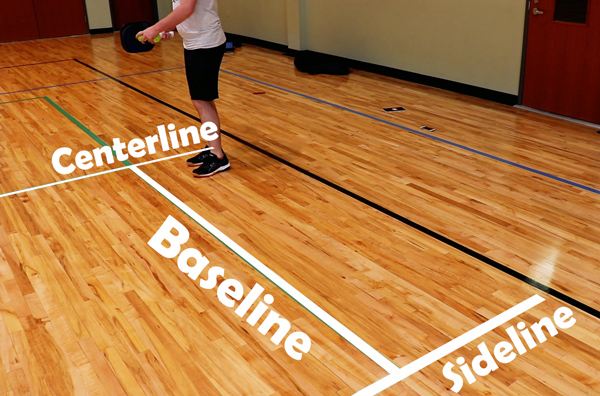
Stay in the box when you serve!
But it’s not just the colored lines that matter. It’s the imaginary extension of these lines that are more important. For example, imagine the centerline drawing itself all the way back towards a wall. Do the same for the sideline. Now remind yourself every time that you can’t cross those imaginary lines. It’s like being in a little box.
We’ll talk more about this later, but when you’re making your serve, keep yourself inside this imaginary box, and never step over the lines or it will be a fault.
Rule #4: Hitting the lines is fine, except for the kitchen
If you aren’t familiar with what the kitchen (non-volley zone) is, then head over to this article that will give you all the juicy details.
Here’s the thing about line calls in pickleball. Every single time a ball hits a line, it is good. Except for when it hits the kitchen line during a serve. This is the only exception.

Any serve that hits the kitchen line or kitchen zone is a fault.
The kitchen line is the line that surrounds the entire kitchen. The ball cannot hit the base kitchen line or the side kitchen line as you see in the image above. If it does, it’s instantly a fault. This includes if the ball hit the net beforehand.
Other rules worth noting (from the official rulebook)
- At least one foot must be planted on the ground during the serve.
- If either opponent interferes with the flight of the ball during a serve, it’s a point for the serving team.
- It’s a fault if you miss the ball. But if it lands on the ground without swinging, it’s not a fault.
- It’s a fault if the ball touches any permanent object before it lands.
- It’s a fault if the ball touches you or your partner and anything they’re holding or wearing during a serve.
Let’s talk about lets
The next set of rules we’re going to talk about today is the “let”. A let is just a fancy term for a re-do.
A let is when a serve hits the net, bounces over then lands in the appropriate serving quadrant of the opponent. If it lands in the kitchen, on a kitchen line or in the other opponent’s quadrant, then it’s a fault. This obviously includes if it lands outside the court itself.
If a situation like this happens, people will call “let” out loud and you will be allowed to re-do the serve. When you call out “let” make sure it’s loud! Keep in mind that there’s an unlimited amount of lets that a server can have.
If the return server isn’t ready, and you serve, then that’s also a let. Make sure the opponent is ready before you send the ball over.
Step-by-step serving guide
The key to having a great serve is to do the same thing every single time. Here’s a step-by-step guide on how to do it.
Step 1: Decide where you’re going to aim
This isn’t super important if you’re an absolute beginner. But if you’re an advanced player or you come from tennis, then you need to decide where you’re going to aim before you go through your serving routine. If the game has been going on for awhile, then you’ll probably already know where your opponent’s weak spots are (more on that later). Have a spot on the court in mind, then commit to that spot.
Step 2: Go through your pre-serve routine then call out the score
Calling out the serve is a basic etiquette principle in pickleball. It’s a nice thing to do because it’s easy to lose track of the score. Make sure you call it out loudly.
If you don’t have a pre-serve routine, you should acquire one. This is the fun part. You can do whatever you want. You could potentially jump up in the air, tap your toes then sing the Tetris song, but I don’t recommend it. Keep it simple.
Pre-serve routines are extremely important because it gives your brain a sense of consistency that is connected with a physical motion. This makes it easy for your brain to do the same serve every time, increasing your consistency and your confidence. It also keeps you from getting the Yips.
Here’s what I do. I casually get in the position that I want to be in. This can change depending on what kind of serve I’m going to do. I have a powerful topspin serve, so sometimes I like to position myself on the centerline and serve straight down their own centerline. It’s brutal. But I have to casually walk over to the centerline else my opponent may get suspicious.
I then hit the ball to the ground, catch it, then repeat. I press the ball against the face of my paddle, call out the score, then I proceed to strike the ball.
Step 3: Step forward and plant your foot
Here’s where the actual serving motion begins.
To start off, what foot you will plant will depend entirely on which hand you’re dominant with. If you’re right-handed, it will be your left foot. If you’re left-handed it will be your right foot. Planting your foot is important when you serve because it will help you to create power and torque in your swing. This is the reason why golfers have to wear “spikes” under their golf shoes. It’s to keep them planted on the ground so that the hips and shoulders will do the work.
Pickleball is no different. When you plant your foot forward you’re not only generating power but balance as well. It can be easy to lose your footing when you’re serving. So having a foot planted firmly in front of you will keep you from falling over one way or the other.
Make sure you give yourself plenty of room to step forward easily. The last thing you want to do is step over the baseline and get a fault.
Step 4: Smack the ball!
Here’s the thing about serving in pickleball. You don’t necessarily have to hit the ball hard. Most people, even the professionals, serve the ball easily without much gusto. The reason is that the point of a serve is not to get an ace, but to hit the ball deep enough to where the opponent has a harder time getting to the kitchen. We’ll talk more about this later.
The downside to serving hard is that if you’re playing a lot that day then serving hard can wear you out easily. Also, powerful serves are more likely to go out or into the net.
If you’re a beginner, the key to serving is to just get the ball inside the opponent’s service court. As you progress, you can begin focusing on hitting the ball harder and lower. But for now, just focus on getting it over the net and into the service court. I’ll show you how to make your serves better later in this article.
How you actually swing the paddle is totally up to you! As long as it conforms with the rules, you can do whatever you want. If you want to lock your elbow, you can do so. If you want to use a lot of wrist action you can snap your wrists a little. You pretty much do whatever you want.
In general, this means do whatever is comfortable for you! You don’t have to swing like the pros. Play your game and swing the way you think is best for your situation. If you’re new, you’ll get used to it eventually!
Step 5: Don’t run forward! Stay back and wait for the return
This is a mistake that I see beginners making all the time. I understand! I used to do it all the time. It’s so easy to just run forward instinctively instead of staying back, but this is a huge mistake.
The reason why this is a mistake is that running forward past the baseline means that you won’t be able to return a shot that’s placed at the baseline. The goal of almost every return serve is to place the shot as deep into backcourt as possible. This makes the third shot much harder.
But this is where you can run into trouble if you run forward instead of staying back. If you’re past the baseline, then all the sudden you won’t be able to return a deep shot. If the return is coming back at you and it’s going deep, then you will have to suddenly scoot back to hit a third shot drop, which is one of the hardest shots in the game. The chances of you making a mistake increase dramatically in these situations.
What makes for a good serve?
If the pickleball serve is so simple, then what does a good pickleball serve look like?
It may seem like a good serve is hard, fast and brutal. But most of the times, this isn’t the case. In pickleball, a good serve is designed to exploit the weakness of the opponent to give your team an early advantage. This is where knowing your opponent becomes valuable. I know this is harder in tournament play, but in casual play, it’s definitely possible to know the strengths and weaknesses of your opponent.
Let’s look at some things you can do to increase the effectiveness of your serves.
Serve deep into backcourt
If you want to improve the effectiveness of your serves, this is the #1 thing to focus on.
Sending your serves into deep court is one of the best ways to serve. There are three reasons for this:
- Makes it impossible for them to drive the ball (hit it hard and fast).
- Forces them to hit a return shot that’s more difficult.
- Takes them longer to get to the kitchen.
It’s time to talk about the return serve a bit. This is the 2nd shot that is played during a point. In a lot of cases, the return serve is much more important than the serve. The reason is that the return serve is what sets the serving team up for the third shot drop, the hardest and most important shot in the game.
A good return serve shot needs to be deep in order to make it as hard as possible for the serving team to execute a solid third shot drop.
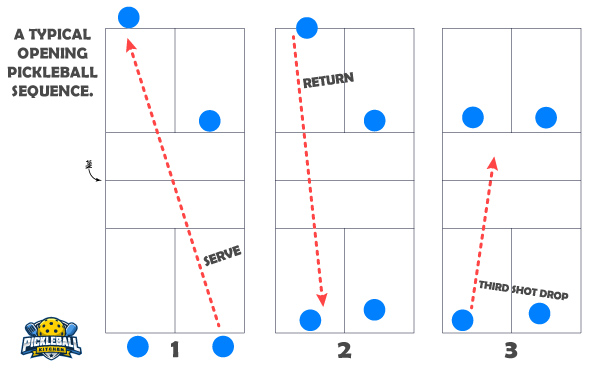
So if you can make your opponents have a bad return serve, then that will set your team up nicely for the famed third shot drop, or even drive! How do you do this?
By serving as deep as possible.
This increases the distance that your opponent will need to judge in order to make a good return serve.
I know, easier said than done.
The trick with a deep, backcourt serve is to train your eye to visualize the shot. Our depth perception gets messed up when we try to look that far back. It just takes practice. The more you practice deep serves, the better you will get.
Serve to the opponent’s weak side
This is another standard strategy in the pickleball world. If you know that your opponent has a killer forehand drive, then you want to avoid that and serve to the backhand. This is especially pertinent if your opponent has an extremely weak backhand. Serving to a weak side increases the chance that your opponent will hit the return poorly, giving you the chance at driving the ball hard to the backcourt.
These types of shots do take precision though. Make sure that you’re comfortable enough before you start doing this.
Getting tricky
When it comes to advancing your serves beyond just the basic fundamentals, there’s always room to put a little bit of junk on the ball. Let’s talk about a few fancy things you can do to your serving armory.
Topspin serves
This the type of serve that I use. It’s interesting because I didn’t start doing this on purpose. It just came to me. I have a topspin serve naturally, but I’ve made good use of it. If you want to try to put more topspin on your serves, it will make your opponent’s return serve much more difficult, and you can get a few aces in there if you hit the centerline.
Another way to enhance the spin on your serves, whether or not it’s top or side spin, is to use a paddle with a fiberglass face. Balls that hit a fiberglass face will sink a bit more into the material, giving the paddle more time to apply directional force to the ball. This creates more spin.
Try not to overdo this type of serve though. If you don’t apply enough spin, it can go out the baseline. But if you apply too much it will go into the net!
Power serves
Smack it.
Smack it good!
Power serves can be a great option to catch someone off guard. This is especially true if they’re standing near the centerline or standing near the sideline. Just power serve it to the opposite side and the speed of the ball may be too much for them to handle.
Successfully performing a power serve can be difficult though. In order to do this, you want to have more wrist action through the stroke. This will give you more paddle speed, and thus more power.
Changeups
Yup, it’s not just something that you see in baseball. Doing a changeup serve can really mess up your opponents, but it has to be done correctly.
A “change up” is a serve that deviates from what your typical serve is. The best way to do this is to consistently hit a deep, backcourt serve where your opponent has to stand a few feet behind the baseline. Do this for multiple serves, even for most of the game. Once your opponent has gotten used to this serve, hit a soft, short shot a feet from the kitchen. Your opponent won’t know what hit them. They will scramble up to try to get it, but most likely won’t make it in time.
Please remember that this won’t work on advanced players or young players. They will be able to get these balls easily and it will give them an easy trip to the kitchen. And you certaintly don’t want that!
Wrapping up
I hope that this article has been helpful. If you want to see more, feel free to check out the rest of the website and let me know what you think.
I’m curious, how do you serve the ball? I would love to hear how you do it. Let me know in the comments below!
Anuncie Aqui / Advertise Here
Sua marca para o mundo Pickleball! / Your brand for the Pickleball world!

 English
English  Spanish
Spanish  Portuguese
Portuguese  German
German  Italian
Italian  Japanese
Japanese  French
French  Polish
Polish  Russian
Russian  Netherlands
Netherlands  Hungarian
Hungarian  Turkish
Turkish  Videos
Videos  Pickleball Kitchen
Pickleball Kitchen
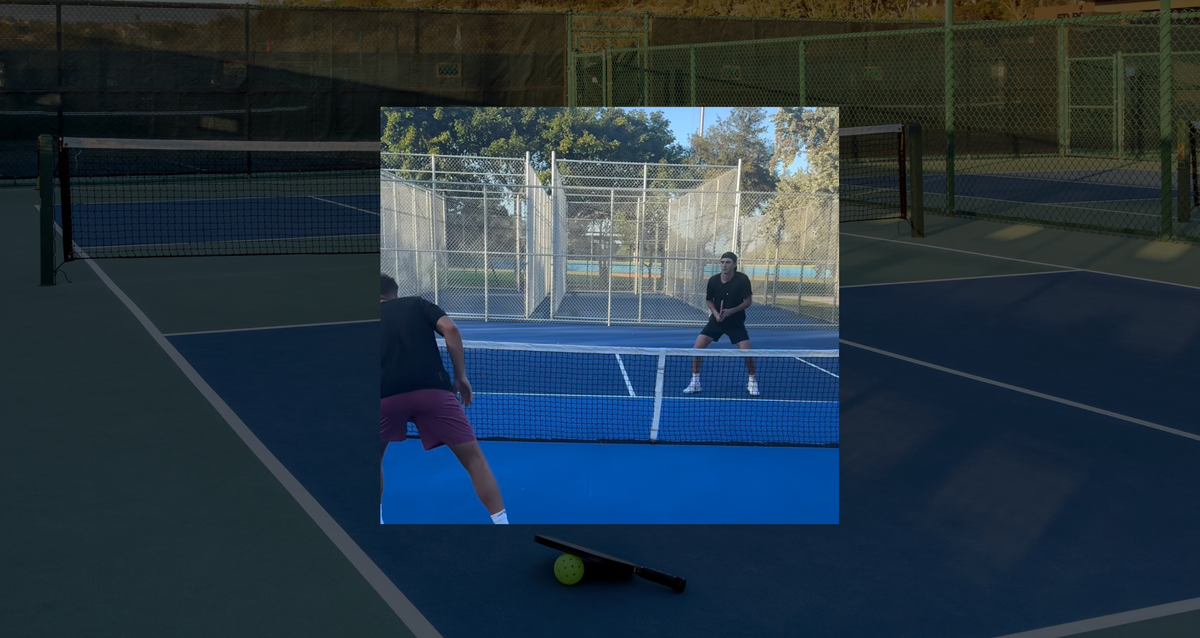
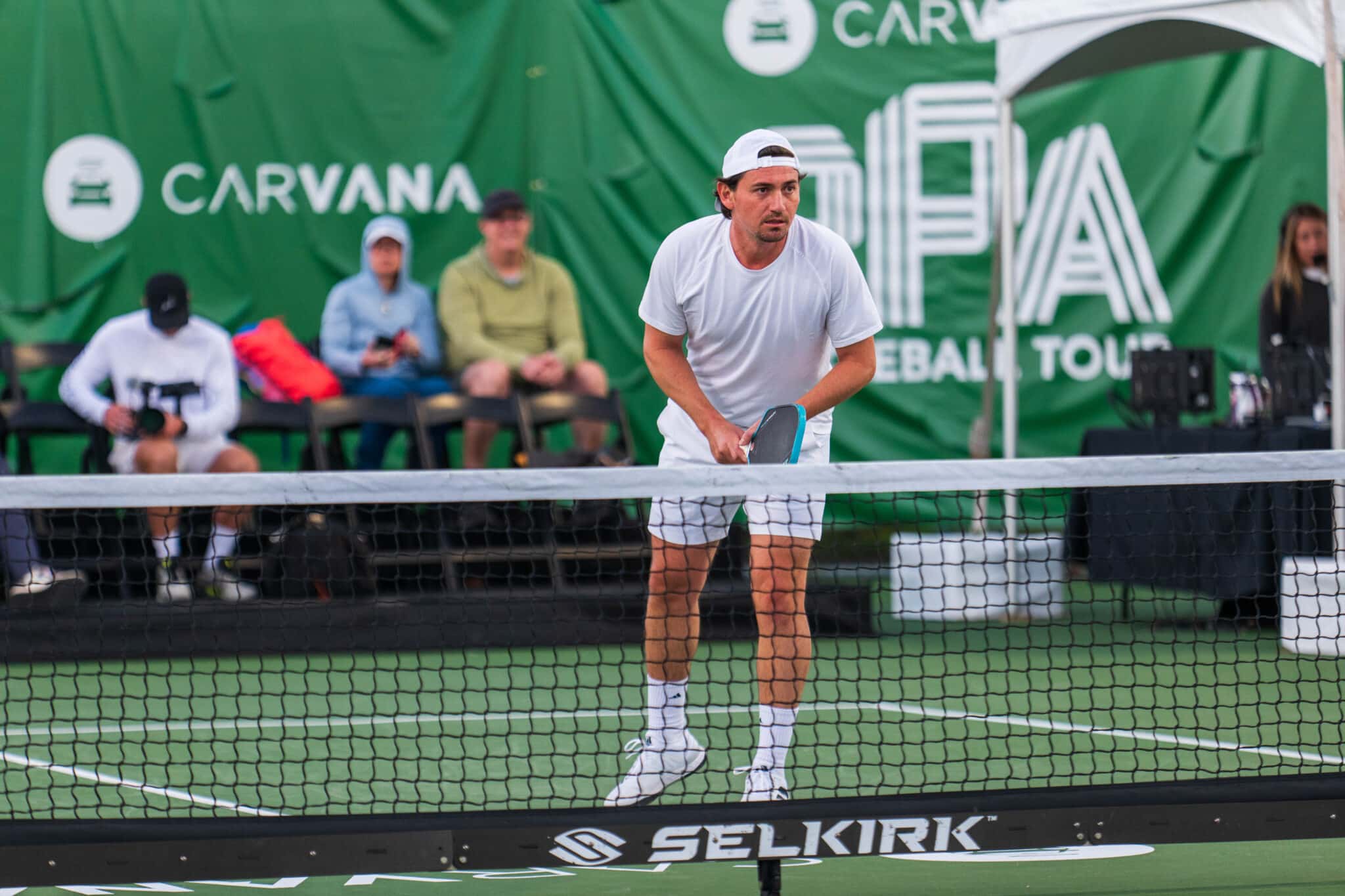
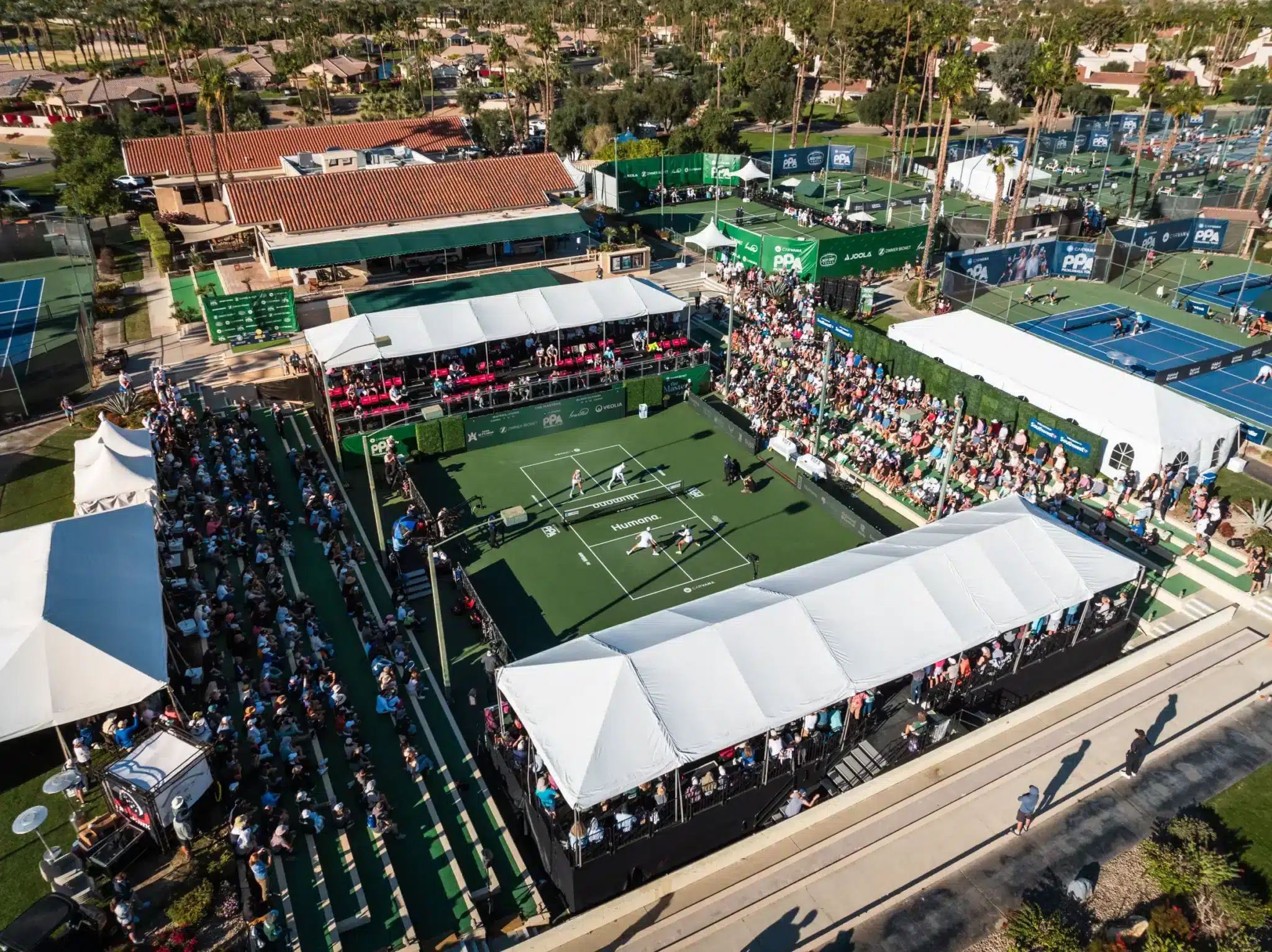
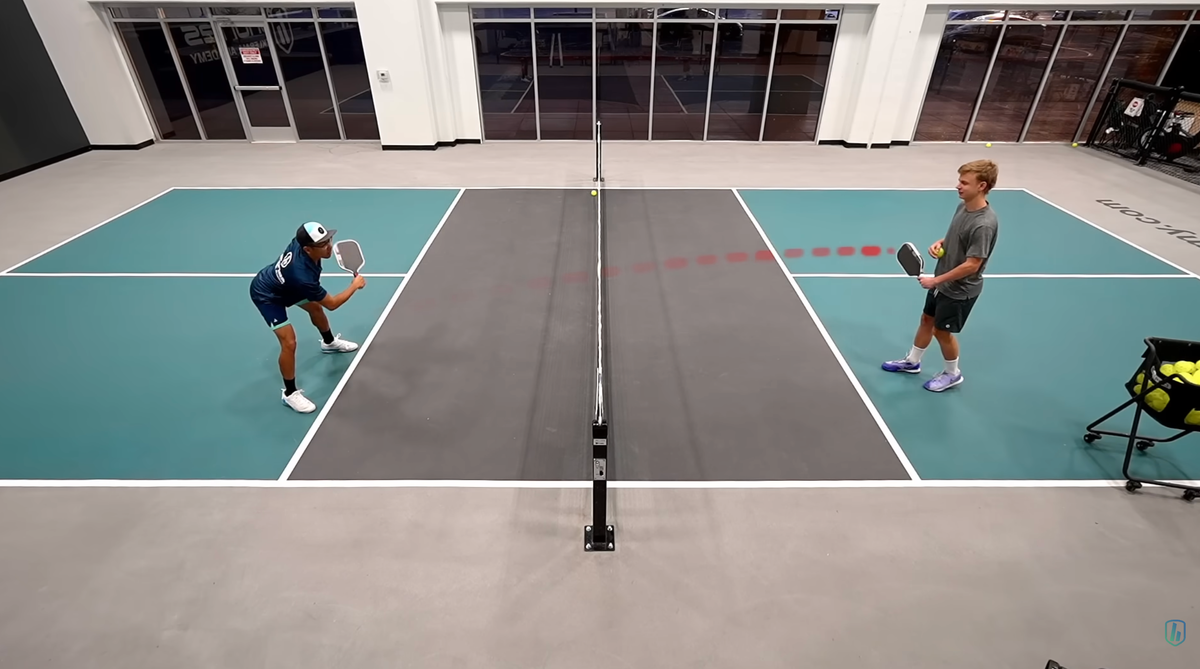




 English (US) ·
English (US) ·  Portuguese (BR) ·
Portuguese (BR) ·